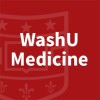
HSCT for Patients With Fanconi Anemia Using Risk-Adjusted Chemotherapy
Fanconi AnemiaSevere Marrow Failure2 moreThe purpose of this study is to determine whether the use of lower doses of busulfan and the elimination of cyclosporine will further reduce transplant-related side effects for patients with Fanconi Anemia (FA). Patients will undergo a transplant utilizing mis-matched related or matched unrelated donors following a preparative regimen of busulfan, fludarabine, anti-thymocyte globulin and cyclophosphamide.

Allogeneic Stem Cell Transplant With Alpha/Beta T AND B Cell Depletion for Hematologic Malignancies...
LeukemiaLymphoma1 moreThis is a single arm pilot study for patients using α/β T cell-depleted peripheral Stem Cell Transplantation (PSCT) in with alternative donor sources with hematologic malignancies receiving alternative donor (unrelated or partially matched related) mobilized peripheral stem cells (PSCs) using the CliniMACS system for T cell depletion plus CD19+ B cell depletion to determine efficacy as determined by engraftment and graft versus host disease (GVHD), and one year leukemia free survival.

ONC201 in Treating Patients With Relapsed or Refractory Acute Leukemia or High-Risk Myelodysplastic...
Recurrent Acute Lymphoblastic LeukemiaRecurrent Acute Myeloid Leukemia4 moreThis phase I/II trial studies the side effects and best dose of ONC201 and to see how well it works in treating patients with acute leukemia or high-risk myelodysplastic syndrome that has returned after a period of improvement (relapsed) or does not respond to treatment (refractory). ONC201 may stop the growth of cancer cells by blocking some of the enzymes needed for cell growth.

A Phase 1 Study of Engineered Donor Grafts (Orca-Q) in Recipients Undergoing Allogeneic Transplantation...
Acute Myeloid LeukemiaAcute Lymphoblastic Leukemia2 moreThis study will evaluate the safety, tolerability, and efficacy of engineered donor grafts ("OrcaGraft"/"Orca-Q") in participants undergoing myeloablative allogeneic hematopoietic cell transplant transplantation for hematologic malignancies.

Study of Itacitinib for the Prophylaxis of Graft-Versus-Host Disease and Cytokine Release Syndrome...
Acute Myelogenous LeukemiaAcute Lymphocytic Leukemia3 moreIn this trial, the investigators will begin to explore the possibility that, as in mice, janus kinase inhibitor 1 (JAK1) inhibition with haploidentical-hematopoietic cell transplantation (HCT) may mitigate graft-versus-host-disease (GVHD) and cytokine release syndrome (CRS) while retaining Graft-versus-Leukemia (GVL) and improving engraftment. The purpose of this pilot study is to determine the safety of itacitinib with haplo-hematopoietic cell transplantation (HCT) measured by the effect on engraftment and grade III-IV GVHD.

Umbilical Cord Blood Transplantation From Unrelated Donors
Acute LeukemiaImmune Deficiency Disorder8 moreThis study is a single-center, treatment protocol with 4 possible preparative regimens, designed to validate the process of umbilical cord blood stem cell transplantation at our institution.

Use of T-allo10 in Hematopoietic Stem Cell Transplantation (HSCT) for Blood Disorders
AML - Acute Myeloid LeukemiaMDS (Myelodysplastic Syndrome)4 moreA significant number of patients with hematologic malignancies need a hematopoietic stem cell transplant (HSCT) to be cured. Only about 50% of these patients have a fully matched donor, the remaining patients will require an HSCT from a mismatched related or unrelated donor. Almost 60% of these mismatched donor HSCTs will result in graft-versus-host disease (GvHD), which can cause significant morbidity and increased non-relapse mortality. GvHD is caused by the donor effector T cells present in the HSC graft that recognize and react against the mismatched patient's tissues. Researchers and physicians at Lucile Packard Children's Hospital, Stanford are working to prevent GvHD after HSCT with a new clinical trial. The objective of this clinical program is to develop a cell therapy to prevent GvHD and induce graft tolerance in patients receiving mismatched unmanipulated donor HSCT. The cell therapy consists of a cell preparation from the same donor of the HSCT (T-allo10) containing T regulatory type 1 (Tr1) cells able to suppress allogenic (host-specific) responses, thus decreasing the incidence of GvHD. This is the first trial of its kind in pediatric patients and is only available at Lucile Packard Children's Hospital, Stanford. The purpose of this phase 1 study is to determine the safety and tolerability of a cell therapy, T-allo10, to prevent GvHD in patients receiving mismatched related or mismatched unrelated unmanipulated donor HSCT for hematologic malignancies.

Efficacy and Pharmacogenomics of Cladribine Based Salvage Chemotherapy in Patients With Relapse/Refractory...
Acute Myeloid LeukemiaMyelodysplastic SyndromeThis is a prospective phase II clinical study planned to be conducted at the Medical College of Wisconsin (MCW). After meeting the study criteria and enrollment, patients will be treated with a cladribine based salvage regimen and followed at periodic intervals to determine the primary and secondary objectives.

HLA-mismatched Microtransplantation Without Immunosuppressive Treatment in Patients With Myeloid...
Acute Myeloid LeukemiaMyelodysplastic SyndromesThis study aims at evaluating the safety of an approach based on HLA-mismatched Microtransplantation without immunosuppressive treatment in patients With myeloid hemopathies who are ineligible to conventional allograft

Nivolumab and Ipilimumab After Donor Stem Cell Transplant in Treating Patients With High Risk Refractory...
Allogeneic Hematopoietic Stem Cell Transplantation RecipientMyelodysplastic Syndrome2 moreThis phase Ib trial studies the side effects and best dose of nivolumab and ipilimumab after donor stem cell transplant in treating patients with high risk acute myeloid leukemia or myelodysplastic syndrome that does not respond to treatment or has come back. Immunotherapy with monoclonal antibodies, such as nivolumab and ipilimumab, may help the body's immune system attack the cancer, and may interfere with the ability of tumor cells to grow and spread.
